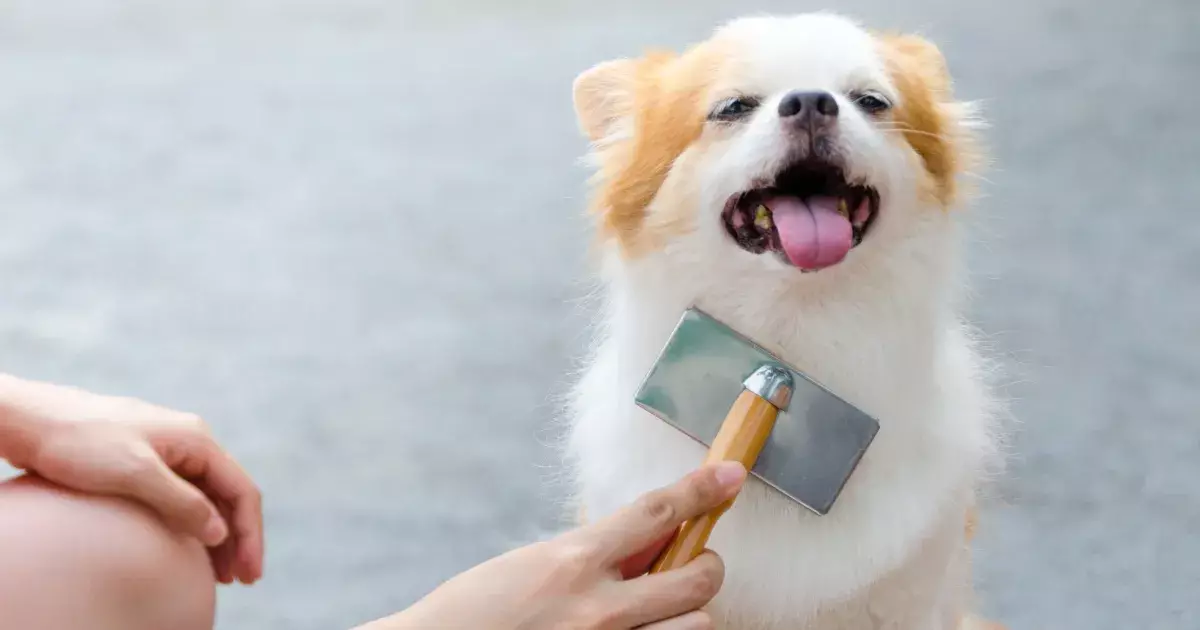Keeping your furry friend looking their best requires regular grooming, and brushing is an essential component of this routine. While it may seem straightforward, effective brushing involves understanding your dog’s coat type, utilizing the right tools, and applying proper techniques. Here, we delve into the importance of brushing, the various dog coat types, and expert tips for ensuring your dog maintains a healthy, vibrant coat.
Dogs possess a natural instinct to keep themselves clean; however, their grooming capabilities can only go so far. Regular brushing is crucial in managing shedding and ensuring their coat remains in top condition. By removing excess hair, you not only minimize the amount of fur lurking around your home—whether on your furniture, your clothes, or your car—but also promote a healthy coat and skin.
Brushing serves another vital purpose: it allows you to monitor your pet’s health. As you brush, you can check for any abnormalities, such as lumps, dry patches, or signs of parasites like fleas or ticks. This is particularly true as dogs age, as they may develop new growths that require attention. Early detection can lead to prompt treatment, making brushing not just a grooming task but a health check as well.
One of the key factors in developing a successful brushing routine lies in understanding the unique characteristics of your dog’s coat. Different breeds have varying grooming needs, and tailoring your approach accordingly ensures the best results.
Long-Haired Breeds: Dogs such as Collies and Tibetan Terriers can become easily tangled or matted due to their luxurious coats. For these breeds, brushing is essential on a weekly basis, or even more frequently during shedding seasons. Utilizing a pin brush works best since its bristles can penetrate the undercoat and remove loose hairs without causing discomfort. Always brush starting near the skin and move outward, carefully detangling any mats with a comb.
Short-Haired Breeds: Breeds like Labrador Retrievers and Greyhounds, with short and smooth coats, require significantly less grooming. Brushing them every couple of weeks will suffice, focusing on removing loose hairs. A rubber brush or grooming glove can work wonders, as they effectively lift dirt and loose hairs while mimicking petting, making it a pleasant experience for the dog.
Wiry-Coated Breeds: Dogs such as Dachshunds and Terriers often have textured coats that need specific attention. Using a slicker brush followed by a metal comb every few days helps remove dead hair and prevents matting. A stripping knife can also be used for more thorough grooming, although it’s advisable to seek guidance from a professional on how to use it correctly.
Brushing Techniques: Achieving the Best Results
Mastering the mechanics of brushing is vital for both your and your dog’s comfort. Implementing the right techniques can make the experience enjoyable and effective.
First, always brush in the direction of hair growth; dogs can find reverse brushing uncomfortable. Approach your dog gently with the brush, allowing them to become accustomed to the feeling. If you encounter tangles, take your time and gently work through them instead of pulling forcefully, which can cause pain and damage to the fur.
For particularly stubborn mats, don’t hesitate to use special coat conditioners or mat spray. Allow the product to sit for a few minutes before attempting to detangle. If necessary, using scissors to cut through mats can be tempting, but proceed with caution to avoid injuring your pet. Opting to take your dog to a professional groomer for particularly challenging mats can save both of you from a stressful experience.
While many pet owners can manage grooming at home, there’s no shame in seeking professional assistance. Groomers possess the skill and expertise that can make a significant difference, especially for dogs with more complex grooming needs. They are adept at handling anxious pets and can often achieve results that may be difficult for an owner to replicate alone.
Establishing a regular brushing routine for your dog is essential for maintaining their coat health and overall well-being. By understanding your dog’s specific needs and employing proper brushing techniques, you foster not only a cleaner environment but also a deeper bond with your furry friend. Whether you choose to tackle grooming solo or enlist professional help, your commitment to your dog’s grooming routine will be well worth the effort.

